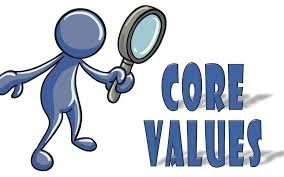At the executive level, your words compete with hundreds of emails, slack threads, and reports each day. The hard truth is that if your written communication isn’t clear, concise, and purposeful, it won’t be read - let alone acted on.
Strong written communication is not about writing more; it’s about making every word work harder. Leaders who excel at it get their updates noticed, their recommendations considered, and their influence extended well beyond the room.
Principles of Effective Written Communication
1. Lead With the Headline. Don’t bury the lead. Start with your main point or recommendation, then provide supporting detail. For example:
Weak: “We’ve been exploring options for several weeks, and after reviewing multiple vendors, considering cost, and weighing implementation…”
Strong: “We recommend Vendor X for onboarding — it’s fastest to implement, cost-effective, and reduces churn risk. Here’s why.”
Your audience shouldn’t have to dig for your point.
2. Keep It Smart and Brief. As Jim VandeHei et al explain in their book Smart Brevity, attention is today’s scarcest resource - and clarity wins. Their approach, developed at Axios after years of watching leaders drown in bloated emails and endless decks is built on one principle: say less, but make it matter more. Use bullet points, subheads, and bold labels so people can scan in seconds. Busy executives do not want three pages of context; they want the headline, the “so what,” and the next step — all in under 30 seconds.
3. Provide Structure. Written updates are easier to follow when information is chunked. Use labels (e.g., Goal, Outcome, Next Steps) so readers know exactly what they’re looking at. A sample structure for an executive update might include:
Goal
Outcome
Resource Needs / Investment Priorities
Risks & Assumptions
Decision Points
Next Steps
When people can map where they are in your message, they can process faster.
4. Balance Data With Story. Numbers create credibility, but stories make them memorable. Instead of writing: “Engagement increased 12%,” add: “…which means 800 more employees are actively using the new platform every week.” This makes your data relatable and sticky.
5. Always Clarify the Ask. Every written communication should answer: What do you need from me? A decision? Endorsement? Awareness only? Close with a clear ask to avoid ambiguity.
Example: Before and After
Before (messy): “So, we’ve been kicking around some thoughts on the new product launch. A few teams weighed in, and overall the pilot seemed fine, though there were some hiccups we’re still sorting out. The big question is whether we should scale, but of course, there are concerns around budget and bandwidth, so we’re still figuring out the best path.”
After (clear): The pilot launch delivered strong results — 92% customer satisfaction and a 15% increase in upsell. My recommendation is to proceed with scaling the launch. To do so, we’d need an additional $1.2M in resources. I’d welcome your perspective on this approach and look forward to discussing it at the board meeting.
Written communication at the executive level is a leadership tool. When you lead with the headline, write with brevity, provide structure, blend data with story, and clarify the ask, you make it easy for others to engage with your message. In a world where attention is scarce, clarity is influence.
Reflection Question: How often do your emails and written updates get acted on the first time — and what would change if they were clearer and more concise? Comment and share below; we’d love to hear from you!
Quote of the Day: “The most valuable of all talents is that of never using two words when one will do.” – Thomas Jefferson
As a leadership development and executive coach, I work with leaders to sharpen their executive communication skills. Contact me to explore this topic further.
How good is your written comms.?












